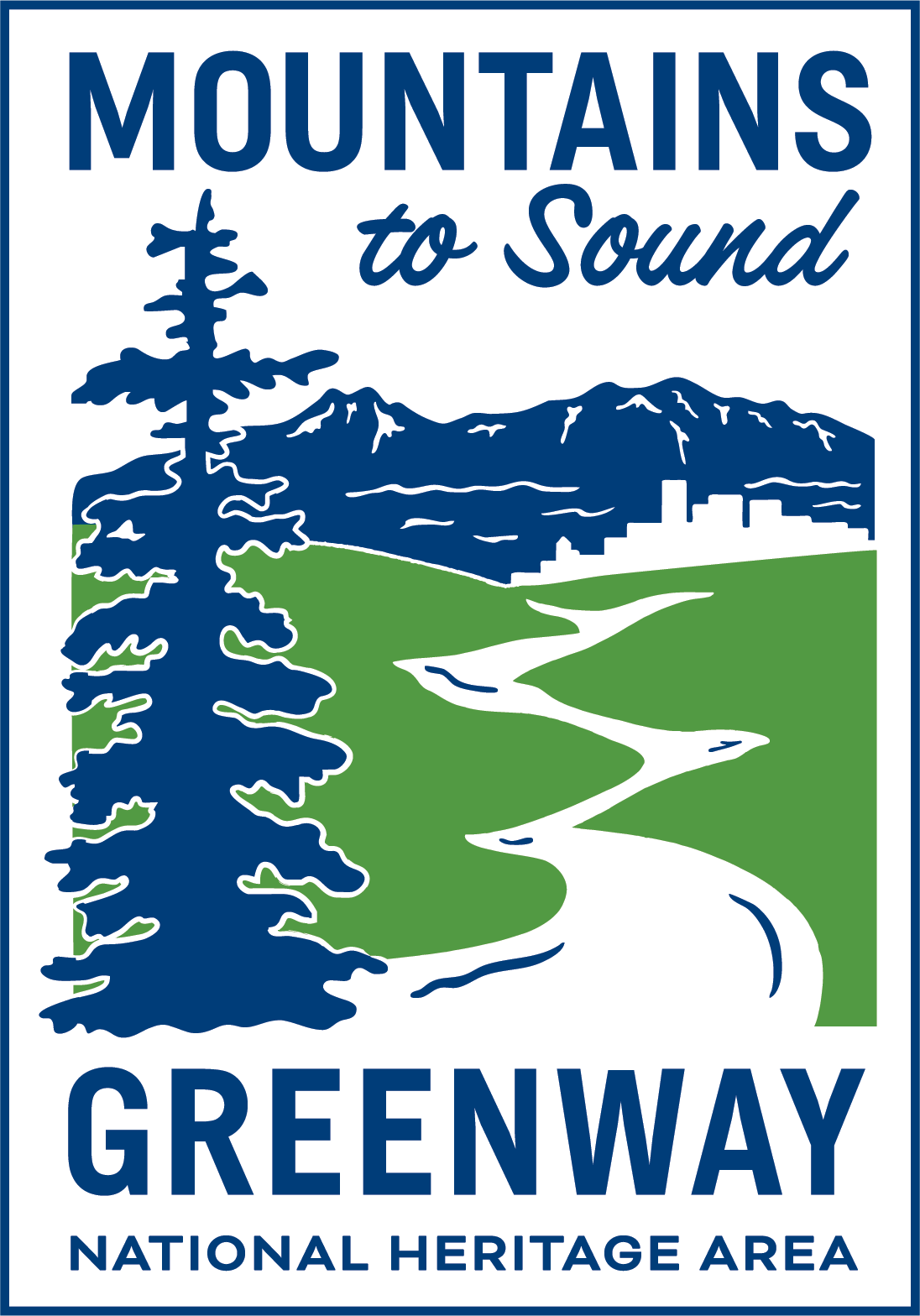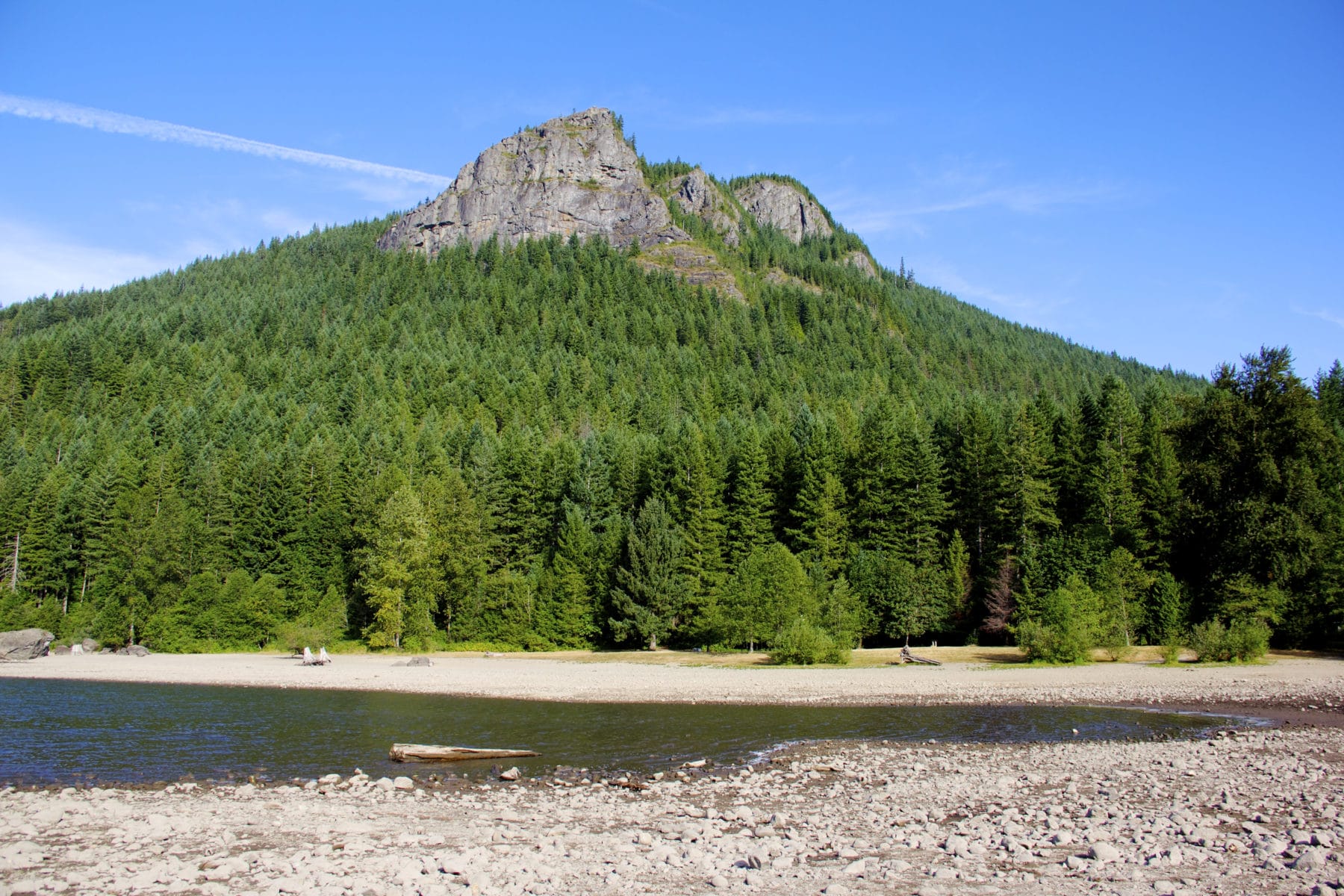Snapshot: Greenway Highlights of 2015
We are so fortunate to call the Mountains to Sound Greenway our home. Few places anywhere can claim such vast, beautiful, and conserved wild places so very close to a vibrant urban area.
This is not by chance. Only through an unwavering ethic of collaboration between government, business, nonprofits, and private citizens–all part of the Greenway Coalition–has this been possible. Only through our continuing commitment to that ethic will we keep this heritage, and continue to set a national example for how the natural and built environments can thrive in harmony.
Reflecting back over the last 12 months, there are many accomplishments to celebrate. These successes—many compiled here—are thanks to our broad-based coalition. It’s well known that the secret to the Greenway’s success has always been our passionate supporters who collectively move mountains.
Snoqualmie Pass Wildlife Bridge
The Washington State Department of Transportation broke ground this year on a massive wildlife overpass that will connect habitat between the north and south sides of Interstate 90 just east of Snoqualmie Pass. Several bridges are part of a highway expansion project aimed at increasing road capacity and safety. Giving wildlife several options to cross under or over the highway will reduce road accidents and reconnect isolated animal populations. In a coordinated effort to improve habitat along the highway, the US Forest Service planted 100,000 trees and shrubs, and improved habitat on 36 acres of wetlands and uplands near and under the wildlife bridges. Learn more.
Gateway to the Middle Fork Conserved
The Trust for Public Land, working in a familiar partnership with King County and the State Department of Natural Resources, has finalized the purchase of a key parcel of mature forest at the Gateway to the Middle Fork Snoqualmie Valley. These 80 acres of newly conserved lands will connect the beloved Valley Camp with the new Mailbox Peak trailhead, with the potential to house future nature trails for family members less keen on huffing up to the Mailbox, as well as a welcoming entry point for visitors to the up-and-coming Middle Fork Valley.
Tiger Mountain Bridge and Trails
This year, the State Department of Natural Resources made significant recreation improvements on Tiger Mountain. DNR installed a new 200 foot bridge to span High Point Creek and connect several trails. On the other side of the mountain, with funding from the Washington Wildlife and Recreation Program, DNR is building several miles of new trails to develop an interconnected mountain bike network for the growing sport.
The Last Plum Creek Checkerboard
The Trust for Public Land ushered in a new era of conservation this year, by acquiring the very last two parcels of Plum Creek checkerboard lands in the upper Yakima Basin. These properties, covering a combined 1,500 acres, add to the effort to connect wildlife habitat from the central to the North Cascades. One of the parcels also abuts the Pacific Crest Trail, ensuring that National Trail corridor remains open for public use. The US Forest Service took ownership of the lands with funding from the Land and Water Conservation Fund.
Cle Elum Fish Passage
In another step forward for the Yakima Basin Integrated Water Plan, the Bureau of Reclamation, the Yakama Nation, and the state departments of Ecology and Fish and Wildlife celebrated the ground-breaking on a project that will allow sockeye salmon access to Lake Cle Elum and its cold headwaters for the first time in over 100 years. The Yakama Nation has long been working to restore the sockeye population in the Lake, and this creatively-designed spiral fish ladder will allow juvenile salmon to migrate downstream at any water level.
Chef-to-Farm Educational Program
Lake Washington Technical Institute launched a new curriculum that connects students in the Culinary Arts program to Snoqualmie Valley farms, to build awareness and markets for local foods. By bringing chefs-in-training to farms, these students are able to grasp the bigger picture of how food is produced and why agricultural sustainability matters. Students toured six Snoqualmie Valley farms, to explore important food issues like labeling, animal welfare, farm-to-table, sustainability, and nutrition. Learn more.
By the Numbers: Volunteers and Students
Greenway Volunteer Program
6,489 volunteers restored natural areas and maintained trails in the Greenway
44,492 hours volunteered
17,339 native trees and shrubs planted
90.4 trail miles maintained
Greenway Education Program
3,589 local students engaged in environmental education lessons
121 classes joined field study trips to Tiger Mountain
54 schools participated
King County Farmland Preservation
King County recognizes that local food can’t exist without local farms. Taking an innovative and committed approach to preserving working farms, King County has established agreements with the City of Seattle to move development rights out of the agricultural district and into urban areas. This is a great example of local governments coming together to steward the region’s growth while protecting important open space lands that make the Puget Sound region a great place to live. Through this framework, farmers are able to sell their development rights for a financial benefit and gain relief from pressure to sell the farm. To date, the King County – Seattle Transfer of Development Rights agreement has protected 12 farms and 900 acres of farmland. This year alone, the agreement helped conserve the Summer Run, Van Strom, Foster, Sinnema, Magnochi, and Rusch Farms.
Upper Carlson Restoration
To improve the health of the Snoqualmie River, King County and the Snoqualmie Watershed Forum—a partnership between the Snoqualmie Tribe, and the cities of Duvall, Carnation, North Bend and Snoqualmie—recently completed a massive restoration project on the Snoqualmie River. By setting back a levy built in the 1930s, the partners reconnected 50 acres of previously disconnected floodplain habitat for threatened Chinook Salmon and Steelhead.
Confluence Park
For 20 years, the City of Issaquah has worked to conserve lands along the three forks of Issaquah Creek. Recently the city created Confluence Park where the forks of Issaquah Creek meet. Here, the city has restored the stream’s natural meander and re-planted the banks to provide improved salmon habitat. Families can now visit a beautiful picnic shelter, restrooms, and trails within walking distance of the growing downtown core. Learn more.
SnoValley Adventure Shuttle
Compass Outdoor Adventures launched the SnoValley Adventure Shuttle this summer, to ferry hikers and mountain bikers from North Bend to popular local trailheads. The shuttle is a collaborative effort between Compass, the City of North Bend, State Department of Natural Resources, the Greenway Trust, and Washington Trails Association to alleviate trailhead congestion, provide public transit to trails, and help local businesses in North Bend capitalize on the recreation market. Plans are in the works to expand the shuttle service in future years, offering a convenient alternative to crowded trailheads. Learn more.
Calligan Creek Conservation
The Mount Si Natural Resources Conservation Area, created in 1987 and greatly expanded by Peter Goldmark, our current Commissioner of Public Lands, became a little more whole this year. The Washington State Department of Natural Resources acquired a 380-acre inholding at Mount Si. Now in public ownership, these lands can undergo necessary restoration and be opened to recreation. Conserving one more patch of inholdings is part of a larger vision for the Middle Fork Valley.
Teanaway Community Forest
The Teanaway Community Forest is abuzz with activity this year. Acquired two years ago as a key part of the Yakima Water Plan, these 50,000 acres are our state’s very first Community Forest, a new approach created by Commissioner Goldmark a few years ago.
For 18 months, an appointed citizens’ advisory board directed the Departments of Natural Resources and Fish and Wildlife in the creation of a management plan that balances the many values of the Teanaway. Cattle grazing and wolf habitat, salmon restoration and water storage, wildfire and all forms of recreation were taken into consideration. With this new plan in place, the Department of Natural Resources has been hard at work in the forest, starting a 500-acre thinning to improve forest health, significantly upgrading the Teanaway Campground, and restoring roads to stop sediment from entering streams. In conjunction, the Yakama Nation has begun a major stream restoration project and Kittitas County made a major investment in recreation access by paving the Teanaway Road for visitors to the forest.
Every Trail Connects Campaign
REI donated more than half a million dollars in August to recreation projects across the country. The co-op asked outdoor enthusiasts in 10 communities to vote for worthy trail projects, and more than 12 thousand votes were cast for the Middle Fork Trail. REI is donating nearly $70,000 dollars to rebuild the currently impassable trail as part of a concerted campaign led by the US Forest Service to develop a number of new recreation facilities as the road through the Middle Fork Valley is paved. Public-private partnership like this is the only way we can expand and improve recreational infrastructure to meet rising demand during this time of disappearing funding for public land management. Learn more.
Taneum Campground, Road, and Floodplain restored
Access to the popular Taneum Creek valley was threatened after one lane of the main road washed into the river during a flood. The erosion and the road siting was also a problem for fish. The Forest Service, working in tandem with the Yakama Tribe, tackled the habitat restoration and access issues at the same time. Approaching the problem holistically, the Forest Service has re-opened the road to the Valley, restored and re-opened the campground, restored the adjacent floodplain, and planted vegetation in the wetland areas along the road and the river. The Yakama Nation improved habitat for fish in the creek by installing large woody debris.
Lake Sammamish State Park
A few years ago, Lake Sammamish State Park was not in the best shape. Old facilities were fast decaying and the public beach areas were a shambles. The State Legislature, State Parks, and the Issaquah community have taken a bold step to turn around the trend. This year, they opened a new, sustainably-crafted beach house, and will soon be making strides to improve trails, add a playground and restore Sunset Beach, thanks to a collaborative community plan that revitalizes this iconic park and creates an amazing and family friendly gathering space.





